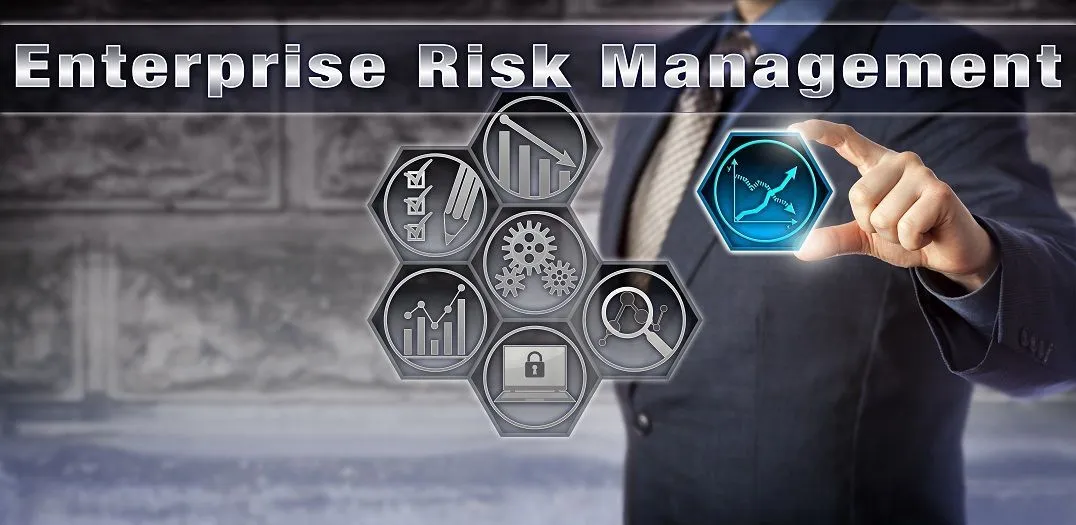In the ever-evolving landscape of risk enterprise management, software vendors and their clients are facing a myriad of challenges as they navigate the complexities of modern business and technology.
The increasing reliance on AI, the demand for robust data security, and the need for scalable and flexible solutions are just a few of the critical issues that require careful consideration.
As we continue to progress in this AI-driven world, it is imperative to address these challenges and understand the questions that should concern both software vendors and their clients.
Some of the challenges in risk enterprise management that software vendors and practitioners are currently facing include:
1. Data privacy and security:
Ensuring that sensitive business and financial data is protected from potential breaches and cyber-attacks.
2. Integration of AI and automation:
Leveraging artificial intelligence and automation tools to improve risk assessment and decision-making processes within enterprise management systems.
3. Regulatory compliance:
Adhering to stringent industry regulations and standards while also staying ahead of any potential changes or updates.
4. Scalability and flexibility:
Developing software solutions that can accommodate the changing needs and demands of businesses as they grow and evolve.
5. User-friendly interfaces:
Creating intuitive and easy-to-use interfaces that make it simple for clients to navigate and utilize risk enterprise management software effectively.
6. Customization and personalization:
Offering customizable solutions that can be tailored to the specific needs and requirements of individual businesses.
Some of the questions that should concern software vendors and their clients today include:
1. How can AI and automation be effectively integrated into risk enterprise management software to improve decision-making and streamline processes?
2. What measures are in place to ensure the security and privacy of sensitive data within the software solution?
3. How does the software address the evolving landscape of regulatory compliance and adapt to any changes in industry standards?
4. What level of scalability and flexibility does the software offer, and how does it accommodate the growth and development of businesses over time?
5. What steps have been taken to ensure that the user interface is intuitive and user-friendly for clients to use effectively?
6. How customizable and personalized are the risk enterprise management solutions, and how can they be tailored to the specific needs of individual businesses?
As this list is growing, permit me to expand some points with examples:
1. Data privacy and security: In today’s digital age, the protection of sensitive business and financial data is crucial. For example, software vendors need to implement advanced encryption protocols and access controls to safeguard data from potential breaches and cyber-attacks.
They also need to comply with regulations such as the General Data Protection Regulation (GDPR) in the EU or the Health Insurance Portability and Accountability Act (HIPAA) in the healthcare industry.
2. Integration of AI and automation: Software vendors are increasingly focused on integrating artificial intelligence and automation into risk enterprise management systems to improve risk assessment and decision-making processes.
For example, AI algorithms can be used to analyze large datasets to identify patterns and trends, while automation can streamline routine tasks such as data entry and report generation.
3. Regulatory compliance: The software must adhere to stringent industry regulations and standards. For instance, in the financial sector, software vendors need to ensure compliance with regulations such as the Dodd-Frank Act or the Basel III framework.
They also need to keep their systems updated to accommodate any changes in regulations, making it crucial to offer regular updates and support services.
4. Scalability and flexibility: As businesses grow and evolve, they require software solutions that can scale with their needs.
For example, a risk enterprise management system should be able to handle an increase in the volume of data and transactions as a company expands, without sacrificing performance.
5. User-friendly interfaces: The software should offer an intuitive and easy-to-use interface for clients. For example, a clean and visually appealing dashboard with customizable widgets and interactive charts can make it easier for users to navigate through complex data and make informed decisions based on risk analysis.
6. Customization and personalization: The software should be flexible enough to be tailored to the specific needs and requirements of individual businesses.
For example, a software vendor may offer different modules or add-on features that can be customized to meet the unique risk management needs of clients in different industries or with specific risk profiles.
In conclusion, as the realms of business, technology, and risk management continue to intertwine, the challenges facing software vendors and their clients are only likely to increase.
It is through a keen understanding of data security, regulatory compliance, AI integration, and user-centric design that software vendors can shape solutions that meet the ever-evolving needs of their clients.
By addressing these challenges head-on and adopting a forward-thinking approach, software vendors can play a pivotal role in shaping the future of risk enterprise management in this AI-driven world.
The Writer, Prof. Ojo Emmanuel Ademola is the first Nigerian Professor of Cyber Security and Information Technology Management, and the first Professor of African descent to be awarded a Chartered Manager Status.






